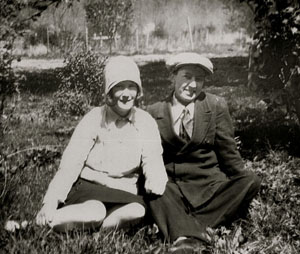 I was reminded of the power of water on a pilgrimage of sorts to my hometown this summer. Having lived in the desert for four years – where a mere eight inches of rain per year is considered normal – I was struck by how green and lush Missouri was. And by the calming effect of the cool, clear streams that flowed through the valleys of my youth.
I was reminded of the power of water on a pilgrimage of sorts to my hometown this summer. Having lived in the desert for four years – where a mere eight inches of rain per year is considered normal – I was struck by how green and lush Missouri was. And by the calming effect of the cool, clear streams that flowed through the valleys of my youth.
The dearth of water in Phoenix causes people to rush to the window when it rains, pressing their noses to the pane. It feels like settlers on a remote prairie, rushing outside to catch a glimpse of a long-overdue stagecoach. A month after moving here, I laughed when I saw people do this. Now I do it too.
On that trip back home, I took this photo of Marble Creek, which passed serenely through the farms of both sets of my grandparents when I was growing up.
I spent days as a teenager wading it, fishing for smallmouth bass with crawdads I caught in the creek for bait. This creek is where we used to skinny dip every year on Groundhog Day for reasons that totally escape me now. This creek also runs behind the cemetery where my parents, grandparents and great grandparents are buried.
I sat at this spot for a couple of hours reflecting on where I had grown up, remembering my family, and considering the adventures that lay ahead. The soundtrack to my reverie was the gentle music of the water cascading over the rocks and a cicada symphony. A smell of cedar was in the breeze.
It would be boastful to refer to that terrain as mountainous or to the waterways as rivers. Hills and creeks are a more honest description — and more in keeping with the modest, self-effacing temperament of the Midwest.
As I think back, it also would have been pretentious to bring a fly rod into any of these waters; a Zebco 33 was about as sophisticated as we got.
It was in a creek very much like this one that I was baptized in the spring of my eighth year. Linus Penturf, the pastor at Stouts Creek Missionary Baptist Church, waded with me out into the water and immersed me as my parents, the small congregation and a school of bluegill witnessed the entire event. Even in that most reverent of moments, I recall thinking I would have to come back later with my rod and reel.
So it was no surprise when Robert Redford’s beautiful film, A River Runs Through It, hooked me from the very first line: “In our family, there was no clear line between religion and fly fishing.”
The movie is an adaptation of a Norman MacLean story about his Montana childhood –much of which was spent fly fishing on the majestic Big Blackfoot River.
In A River Runs Through It, the taciturn father, played by Tom Skerrit, is a Presbyterian minister who describes Methodists as “Baptists who could read.” My spiritual journey continues to take me far beyond that chilly creek, partly because — as Tom Skerrit’s character would have asserted — I learned to read.
Since Missouri is a long way from any coastline, and since my parents were wary of venturing beyond Iron County, I was out of high school before I first saw the ocean. It was the Atlantic as seen from the shores of New Jersey – which is not the garden state their license plates would have you believe. But the memory that remains is a powerful one:
To a ceaseless cymbal crash of waves, Bill Latham and I ran along the beach, as if drawing energy from the ocean itself.
I now have gazed from the pier at Lake Michigan, dipped my hand into the Dead Sea and walked the footpaths of the Cinque Terre overlooking the Mediterranean. I have flown over the Atlantic, the Pacific and the Indian oceans — and the view from 30,000 feet makes me distrust big water. An ocean is an anonymous, indifferent crowd. But a creek has a personality, a sense of humor and a touch of liquid grace.
I think Norman MacLean would agree, based on how he ended his story:
Eventually, all things merge into one, and a river runs through it. The river was cut by the world’s great flood and runs over rocks from the basement of time. On some of the rocks are timeless raindrops. Under the rocks are the words, and some of the words are theirs.
I am haunted by waters.





